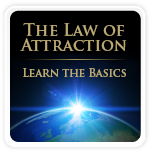-
 Love &
Love &
Relationships -
 Money &
Money &
Success -
 Mind &
Mind &
Spirit -
 Health &
Health &
Wellness -
 Inspirational
Inspirational
Videos -
 Spiritual
Spiritual
Coaching -
 Life
Life
Coaching
Ayurveda
 What is Ayurveda?
What is Ayurveda?
”Ayurveda is a Science of Life”
Ayurveda is one of the oldest traditions on holistic medical therapy, but is also one of the newest in the western world. People have followed the Ayurveda health care regime for over 5000 years. The word Ayurveda means the ”The Science of Life”, according to the early language of sanskrit. Ayurveda is not only a science of medicine – it’s a science of life. It is a complete system of living that embraces philosophy, life style, psychology, physical health, and medicine.
Examples of Ayurveda healing tools are: Ayurvedic diet, Ayurvedic massage, Ayurvedic medicine including herbs, plants, oils, and spices, Panchakarma, detoxification processes, reduction therapy including pacification and purification, tonification therapy, and Yoga exercises. For an overview, watch VIDEO on Ayurveda, see below. Also we have included a table on common terms used in Ayurveda – “Ayurvedic Terminology”
Why is Ayurveda still relevant today?
Despite the development in western medicine and modern technology, this ancient system of health care is still relevant today, even to the people living in the western world. How can this be?
People who are suffering from chronic diseases that are incurable, according to the western medicine, are looking for alternative ways in order to heal. More than 200,000 Americans have used Ayurvedic medicine, according to the National health Interview Survey in 2007. Ayurveda has helped many people with diseases that has been diagnosed as ”chronic” and incurable. So, what is the secret of Ayurveda?
Ayurveda changes all rules about human potential. According to this spiritual concept, a body in balance can heal itself. Ayurveda helps with restoring balance to assist the body’s own defensive and healing capacity.
Ayurveda focuses on the person, not just the disease
Ayurveda approaches healing differently compared to the western medicine. It recognizes the intimate connection between mind, body and spirit, and this has revolutionized the western world in understanding their health. In western terms, Ayurveda is a combination of preventative health care, healing and philosophy of living. Unlike conventional western medicine, this art of healing focuses on the person and not the disease, and emphasizes on the prevention of illness and encourages the maintenance of good health. Furthermore, Ayurveda can be carefully tailored to individual requirements. It is important to remember that Ayurveda doesn’t treat the illness, it treats the person. Ayurveda is a holistic healing science that focuses on balancing the whole person – mind, body and spirit – to avoid and heal diseases.
For optimal health, we must learn how to achieve balance in mind, body and spirit. Ayurveda can help you to make important life style changes to bring about balance in your life.
How does Ayurveda work?
What is the Ayurvedic approach to overall health? Ayurveda is ”The Science of Life” and the key concepts are:
- The Universal Interconnectedness
- The Body’s Constitution (Prakriti)
- The Life Forces (Doshas)
The Universal Interconnectedness
Everything in the Universe is connected together. Every human contains of the five elements (ether, air, fire, water and earth) that is found in the Universe. A person experience optimal health (physical, psychological, emotional and spiritual health) when he/she is in harmony with the Universe. Ayurveda is a Science of Life which means that in order for us to stay healthy we need to find a way to live in harmony with the Universe, the nature, and the cycles of seasons. We need to adapt our routines and diets, to meat the changes from one season to the next.
The Body’s Constitution (Prakriti)
In order to experience optimal health we also have to make adjustments in life in accordance to our body’s constitution. Prakriti means the body’s constitution, and the way it functions to maintain health, and the person’s unique combination of psychological and physical characteristics. It has to do with factors such as digestion and how the body deals with waste products. According to Ayurveda, a person’s prakriti is unchanged over his/her whole life time.
The Life Forces (Doshas)
In order to achieve optimal health, we also need to make adjustments in life in accordance to our patterns of energy. But let’s start from the beginning.
Prana is a sancrit word and means ”before breath”. Prana is the source of all manifested matters and is related to five elements: ether, air, fire, water and earth. According to Ayurveda, creation expresses itself through these five elements and are manifested in our bodies through three Doshas (life forces): Vata, Pitta and Kapha.
We all have these three Doshas to varying degrees, but one of these Doshas tend to be predominant within us. In order to balance our Doshas, it’s important to find out which of the three Doshas that tend to be predominant within ourselves. Below is a a short introduction to the three Doshas and how to balance each Dosha.
- Vata Dosha
Vata represents ether and air elements of the body. It is associated with movements, changes and also the nervous system. Vata has cold, dry and light qualities. A balanced Vata person is energetic and enthusiastic about life, creative, quick to forgive, flexible, and has usually a lean body structure. An unbalanced person with a predominant Vata tends to have digestive problems, weak energy, cold hands and feet, and tend to get nervous and worry too much.
In order to get balanced, a Vata person needs to relax more, both mentally and physically. It’s also important that a Vata person sleeps and eats at regular times, keeps the body warm, and eats warm foods, according to Ayurveda.
- Pita Dosha
Pita represents fire and water elements of the body. It is associated with digestion, metabolism and energy. Pitta has intense, hot, light and oily qualities. A balanced Pitta person is outspoken with a powerful intellect, has a strong ability to concentrate, is a good decision maker, and has usually a medium body size and weight. An unbalanced person with a predominant Pitta tends to have excessive body heat, heartburn, indigestion, skin rashes and tends to be argumentative with a short temper.
In order to get balanced, a Pitta person needs to balance activity and rest, allow more free time, laugh more, and spend more time in nature on a regular basis. It’s also important that a Pitta person chooses cooling foods, and eats at regular times, according to Ayurveda.
- Kapha Dosha
Kapha represents earth and water elements of the body. It is associated with lubrication, structure and protection. Kapha has cold, slow, heavy and oily qualities. A balanced Kapha person is stable, loyal, calm, patient and thoughtful, with excellent stamina and is usually strong build.An unbalanced person with a predominant Kapha tends to get problems with overweight, allergies, fluid retention, sleeps excessively, becomes stubborn and resistant to change, holding on to things too long.
In order to get balanced, a Kapha person needs more stimulation in life, and needs to avoid naps, stay warm, exercise everyday, and eat foods that are warm and colorful. It is also important that a Kapha person clears the space in his/her home and office to avoid clutter and stagnation from accumulating stuff, according to Ayurveda.
The Key to Optimal Health is BALANCE
We need to be in harmony with the Universe in order to heal and experience happiness and overall health, since we are all connected to each other in this Universal Force of Energy / Universal Connectedness, according Ayurveda. If we neglect the connection between mind, body and spirit and don’t balance the three Doshas / Life Forces within ourselves, we eventually get unhappy and/or sick.
To avoid mental, emotional and physical ailments, we need a balance between all three Doshas within ourselves. This means that in order to stay healthy, we may have to make adjustments in life, in accordance to our patterns of energy and our body’s constitution / Prakriti, through diet, routines, physical and mental exercises etc.. Yoga exercises, Ayurvedic diet, Ayurvedic massage, Ayurvedic medicine including herbs, plants, oils, and spices, and Yoga exercises, are all practices within the Ayurveda that can help create harmony and balance within the body.
What is Ayurveda used for?
Ayurveda is used for both prevention and treatment of illness. It is often used to treat sleep disorders, stress, headaches, constipation, anxiety, depression, colds, asthma, allergies, arthritis, and acne. Studies also show that Ayurveda can lower cholesterol and blood pressure, speed healing and recovery from illness, and slow the aging process. It can also be effective for many chronic diseases.
What are the benefits of Ayurveda?
There are many long term benefits of Ayurveda. Ayurvedic treatment will improve the patient’s physical, emotional and psychological health. It strengthens vital organs, as well as the whole immune system. It is non-invasive and beneficial for patients that suffer from chronic diseases. The detoxification methods of Ayurveda speeds the healing process, and makes the patient more responsive to treatments and medicines.
The benefits of Ayurveda include: increased stress tolerance, improved concentration and memory, increased vitality, overall well-being, inner calmness, normal sleep, improved immune system, strengthened connective tissue, healthier skin and hair, delayed aging, balanced metabolism, and weight loss.
Table: An overview on common terms used in Ayurveda
Ayurvedic Terminology |
|
| Universal Life Force | Prana |
| Energy Pathways | Nadis (72,000 nadis) |
| Main Energy Centers Balances, stores and distributes the ”Life Force Energy” | Chakras (7)1. Root/Base/Kundalini Chakra – Red 2. Sacral Plexus Chakra – Orange3. Solar Plexus Chakra – Yellow4. Heart Chakra – Green5. Throat Chakra – Blue
6. Third Eye/Brow Chakra – Idigo 7. Crown Chakra – Violet |
| The Five Elements |
|
| Optimal Health | Balanced Tri-Doshas
|
| Ways to balance ”Life Force Energy”(Tri-Doshas) |
|
SpiritualCoach.com


